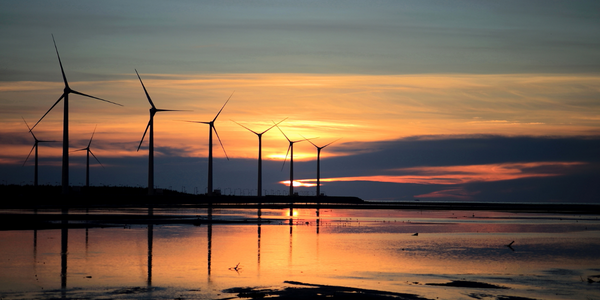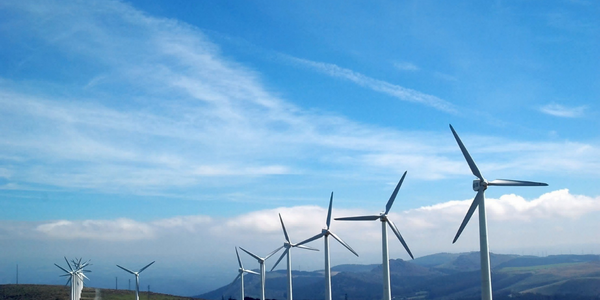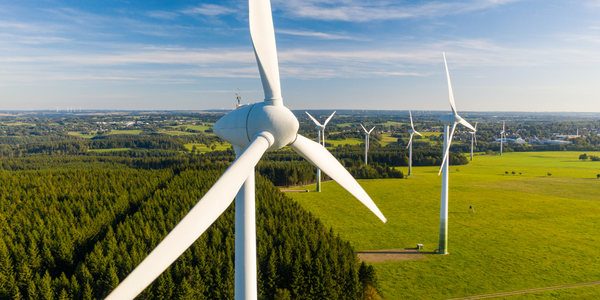Technology Category
- Cybersecurity & Privacy - Identity & Authentication Management
- Functional Applications - Inventory Management Systems
Applicable Industries
- Buildings
- Renewable Energy
Applicable Functions
- Warehouse & Inventory Management
Use Cases
- Inventory Management
- Picking, Sorting & Positioning
About The Customer
Caramuru is a large grain processor and biofuel producer based in Brazil. The company is committed to addressing the issue of climate change and reducing its carbon footprint. As part of its sustainability efforts, Caramuru has issued an Export Pre-Payment Note (PPE) with sustainability-linked KPIs, which includes reporting goals for their GHG emissions, including scope 3 value chain emissions. The company is working towards establishing goals aligned with the Science Based Targets initiative (SBTi) and is on a journey towards decarbonization. Caramuru aims to establish itself as a leader in climate change action within its sector.
The Challenge
Caramuru, a leading grain processor and biofuel producer in Brazil, recognized the impact of climate change on its business and sought to reduce its carbon footprint. The company needed to construct a Greenhouse Gas (GHG) Inventory to measure their emissions and develop a reliable decarbonization strategy. Additionally, Caramuru had recently issued an Export Pre-Payment Note (PPE) with sustainability-linked Key Performance Indicators (KPIs), which included reporting goals for their GHG emissions, including scope 3 value chain emissions. The challenge was to meet these PPE requirements and start planning to establish goals aligned with the Science Based Targets initiative (SBTi).
The Solution
Caramuru engaged SINAI to support them on their decarbonization journey. SINAI's solutions included the development of a granular GHG Inventory and screening of scope 3 emissions. This allowed Caramuru to meet their PPE requirements and begin planning to establish goals aligned with SBTi. SINAI helped Caramuru build a GHG Inventory from scratch, mapping their entire business structure to develop a granular inventory that would serve as a basis for implementing decarbonization actions. The GHG Inventory provided Caramuru with detailed information on their emissions, enabling them to identify mitigation opportunities and establish goals to reduce their carbon footprint. In addition, SINAI supported Caramuru in meeting the requirements of their PPE by providing a detailed analysis of their emissions, thereby demonstrating their commitment to decarbonization and sustainability.
Operational Impact
Quantitative Benefit

Case Study missing?
Start adding your own!
Register with your work email and create a new case study profile for your business.
Related Case Studies.

Case Study
Remote Monitoring & Predictive Maintenance App for a Solar Energy System
The maintenance & tracking of various modules was an overhead for the customer due to the huge labor costs involved. Being an advanced solar solutions provider, they wanted to ensure early detection of issues and provide the best-in-class customer experience. Hence they wanted to automate the whole process.

Case Study
Vestas: Turning Climate into Capital with Big Data
Making wind a reliable source of energy depends greatly on the placement of the wind turbines used to produce electricity. Turbulence is a significant factor as it strains turbine components, making them more likely to fail. Vestas wanted to pinpoint the optimal location for wind turbines to maximize power generation and reduce energy costs.

Case Study
Siemens Wind Power
Wind provides clean, renewable energy. The core concept is simple: wind turbines spin blades to generate power. However, today's systems are anything but simple. Modern wind turbines have blades that sweep a 120 meter circle, cost more than 1 million dollars and generate multiple megawatts of power. Each turbine may include up to 1,000 sensors and actuators – integrating strain gages, bearing monitors and power conditioning technology. The turbine can control blade speed and power generation by altering the blade pitch and power extraction. Controlling the turbine is a sophisticated job requiring many cooperating processors closing high-speed loops and implementing intelligent monitoring and optimization algorithms. But the real challenge is integrating these turbines so that they work together. A wind farm may include hundreds of turbines. They are often installed in difficult-to-access locations at sea. The farm must implement a fundamentally and truly distributed control system. Like all power systems, the goal of the farm is to match generation to load. A farm with hundreds of turbines must optimize that load by balancing the loading and generation across a wide geography. Wind, of course, is dynamic. Almost every picture of a wind farm shows a calm sea and a setting sun. But things get challenging when a storm goes through the wind farm. In a storm, the control system must decide how to take energy out of gusts to generate constant power. It must intelligently balance load across many turbines. And a critical consideration is the loading and potential damage to a half-billion-dollar installed asset. This is no environment for a slow or undependable control system. Reliability and performance are crucial.

Case Study
Energy Saving & Power Monitoring System
Recently a university in Taiwan was experiencing dramatic power usage increases due to its growing number of campus buildings and students. Aiming to analyze their power consumption and increase their power efficiency across 52 buildings, the university wanted to build a power management system utilizing web-based hardware and software. With these goals in mind, they contacted Advantech to help them develop their system and provide them with the means to save energy in the years to come.

Case Study
Remote Monitoring and Control for a Windmill Generator
As concerns over global warming continue to grow, green technologies are becoming increasingly popular. Wind turbine companies provide an excellent alternative to burning fossil fuels by harnessing kinetic energy from the wind and converting it into electricity. A typical wind farm may include over 80 wind turbines so efficient and reliable networks to manage and control these installations are imperative. Each wind turbine includes a generator and a variety of serial components such as a water cooler, high voltage transformer, ultrasonic wind sensors, yaw gear, blade bearing, pitch cylinder, and hub controller. All of these components are controlled by a PLC and communicate with the ground host. Due to the total integration of these devices into an Ethernet network, one of our customers in the wind turbine industry needed a serial-to-Ethernet solution that can operate reliably for years without interruption.

Case Study
Temperature monitoring for vaccine fridges
Dulas wanted a way to improve the reliability of the cold chain, facilitating maintenance and ensuring fewer vaccines are spoiled. Dulas wanted an M2M solution which would enable them to record and report the temperature inside vaccine refrigerators.







